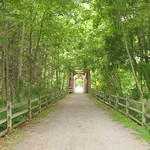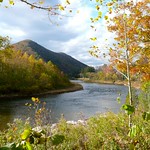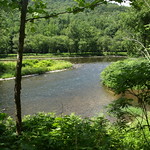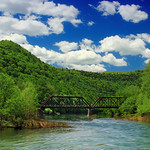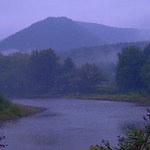The Pine Creek Rail Trail , one of Pennsylvania’s best trails, offers visitors a chance to explore the natural beauty of the Pine Creek Gorge—often referred to as the “Grand Canyon of Pennsylvania.” Spanning 62 miles through Tioga and Lycoming Counties, this well-maintained trail is ideal for hiking, cycling, and wildlife observation, making it a must-visit for nature enthusiasts.
, one of Pennsylvania’s best trails, offers visitors a chance to explore the natural beauty of the Pine Creek Gorge—often referred to as the “Grand Canyon of Pennsylvania.” Spanning 62 miles through Tioga and Lycoming Counties, this well-maintained trail is ideal for hiking, cycling, and wildlife observation, making it a must-visit for nature enthusiasts.
Trail Overview and Features
Beginning just north of Wellsboro and ending in Jersey Shore, the Pine Creek Rail Trail follows the floor of Pine Creek Gorge. The trail’s crushed limestone surface and gentle grade make it accessible for all skill levels. Along the route, visitors encounter campgrounds, comfort stations, and small towns that provide convenient rest stops. The trail hugs Pine Creek for much of its length, offering stunning views of dramatic rock formations, moderate waterfalls, and forested landscapes. Popular activities include fishing for trout, kayaking, canoeing during spring runoff, and horseback riding on designated sections.
Wildlife abounds in the gorge, with sightings of bald eagles, white-tailed deer, river otters, wild turkeys, and even black bears. Seasonal changes enhance the experience: vibrant wildflowers bloom in spring and summer, while autumn transforms the mixed hardwood forests into a tapestry of brilliant colors.
Historical Significance
The trail traces its origins to the Jersey Shore, Pine Creek & Buffalo Railroad, which began operations in 1883. This railway was vital for transporting timber to sawmills along the gorge and coal northward to New York State. Freight trains ran along this line until 1988 when service ceased. Today, remnants of its railroad past—such as old stone mile markers—can still be seen along the trail. Interpretive panels at key trailheads provide insights into the region’s logging and railroad history.
Before the railroad era, Native Americans used the path for travel and raids. Known as the Pine Creek Path, it connected Jersey Shore to Ansonia and beyond. Attempts to convert this rugged route into a wagon road failed due to its challenging terrain.
Access Points and Amenities
Numerous access points make the trail easy to explore. The northern terminus near Wellsboro features parking at Butler Road, while the southern terminus in Jersey Shore offers parking at Railroad Street. Additional access points are located along Route 414 south of Blackwell and near Waterville. The Rattlesnake Rock parking lot is a popular drop-off location for canoeing and shuttle services.
Trailheads like Ansonia provide unique experiences such as horse-drawn wagon rides that traverse a portion of the trail before returning to the starting point. For those seeking panoramic views of Pine Creek Gorge’s depths—reaching up to 1,450 feet—Leonard Harrison State Park and Colton Point State Park offer spectacular overlooks.
Ecological Importance
Designated as a National Natural Landmark in 1968, Pine Creek Gorge spans over 47 miles with nearly 17,000 acres set aside within Tioga State Forest for conservation. Its glacially-carved canyon walls shelter diverse ecosystems that thrive in this protected environment. Migratory fish like trout contribute marine nutrients to freshwater rivers during their lifecycle—a process vital for primary production in local habitats.
The Pine Creek Rail Trail stands as a testament to Pennsylvania’s commitment to preserving its natural heritage while offering recreational opportunities that connect visitors with the state’s rich history and breathtaking landscapes. Whether exploring on foot or by bike, this trail provides an unforgettable journey through one of Pennsylvania's most iconic regions.






